Like charity, concern for the environment starts at home. And even if you don’t realise it, there are a number of ways in which you could be contributing to environmental pollution through your home décor. From the materials you use for your furnishings and window treatments, to the flooring that you have chosen to the kind of furniture that you prefer, to the lighting you have opted for—everything has an ecological impact. However, there are ways to reduce this impact by being more thoughtful about how we go about doing up our homes.
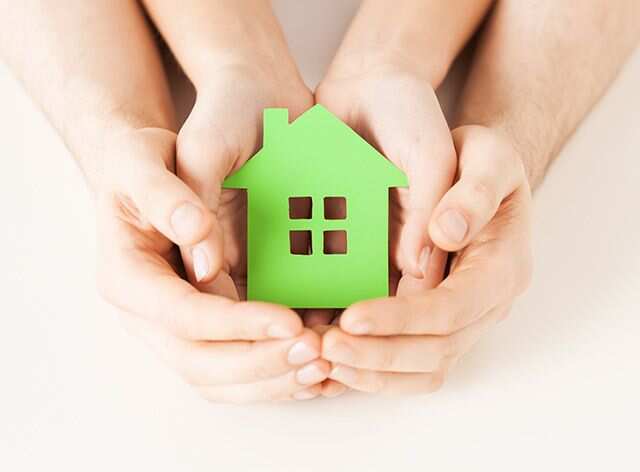
According to a report published in the International Journal of Sustainable Built Environment called Environmental Sustainable Interior Design: A Snapshot Of Current Supply Of And Demand For Green, Sustainable Or Fair Trade Products For Interior Design Practice, author C S Hayles says, “Society is beginning to recognise of the interconnectedness of buildings, people and community in the creation of an environmentally responsible built environment; clients are beginning to understand their role and impact on the environment. As a result they are seeking interiors that demonstrate environmentally responsible, sustainable design.”
And brands across the world are beginning to wise up to this demand. For instance, according to Ikea’s Sustainability Summary Report FY17, sales in their sustainable Life at Home range, grew to EUR 1,720 million in FY17. “There are over 500 products in the IKEA range that enable customers to save energy and water, cut waste, access cleaner air and generate renewable energy,” says the report.
An awareness of the importance of sustainable interior design is the first step towards doing your bit for the health and welfare of the planet and ensuring that your actions do not jeopardise future generations. Here’s how you can make a difference.
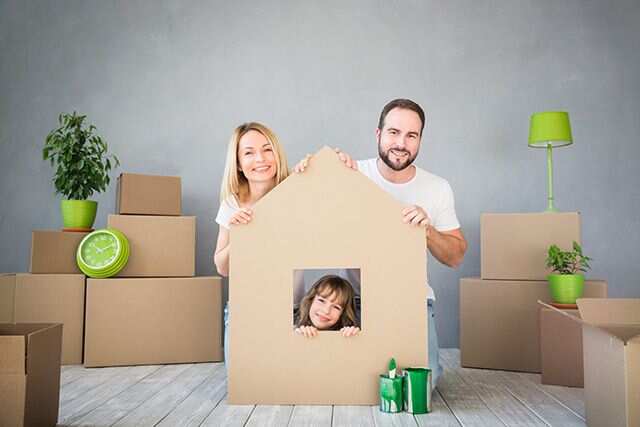
Reuse and repurpose
When you are doing up your home, the temptation is always to buy, buy, buy and throw away all the old stuff. However, the more you buy the more waste you generate. So when you replace that beloved sofa where you spent many a cosy night, or the rocking chair where you nursed your first child, remember that it’s all going to an already over-flowing landfill, where it’s going to sit for a few hundred years before it eventually bio-degrades. The better idea is to reuse and repurpose what you already have. All it takes is some creativity and imagination!
According to Mia Lundstrom, creative director, Life at Home, IKEA India, “the key is to reuse what you already have but to put it in a different context or be creative about it. It could be anything from lighting to framing pictures to posters. Reuse things around the house and make simple decorations out of them. You don’t need to have opulence and ornamentation everywhere in your décor,” says Lundstrom. “Always ask yourself before you throw away something if you can give it a second life. Circularity is not just about recycling—it’s also about expanding the life of a product. Rope in your friends and kids for a brainstorming session and you’ll be surprised at how many ideas you come up with to upcycle and recycle.”
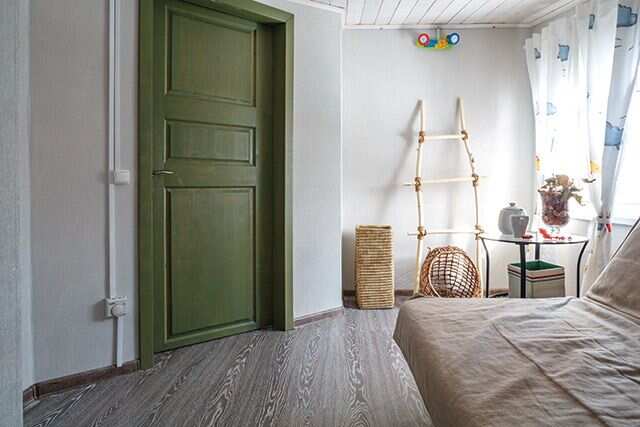
Vintage buys: If you find that you absolutely need new furniture or artefacts for your home, explore thrift, vintage or second-hand stores instead. You will discover a wealth of stuff that you can give a new lease of life. Not only will it give character to your home, you can also experiment by juxtaposing vintage objects with futuristic ones. All you are limited by is your imagination.
Madhuri Sengupta, a Delhi-based journalist, always prefers going to antique markets or thrift stores for decor buys. "I love hunting around in Delhi Amar Colony furniture market in South Delhi because there I often find the most exquisite antiques that have been discarded by their orginal owners. The last time I visited, I was lucky to find a beautiful teak rocking chair from the early 1900s. I also watch out for sales by diplomats who auction their furniture, digital gadgets and household wares when they leave the country. The homes of the Scandinavian diplomats always have a treasure trove of hardy furniture that is dying to find a fresh lease of life in another home!" she says. "When I am in a city like Kolkata, I make it a point to browse through the old antique stores and auction houses on Russell Street and Park Street that make me feel like Alice in Wonderland! From wooden furniture to porcelain and marble artefacts, to crockery and even doors and windows, you could up your entire house with finds from these places. "

Solar power: Indoor lighting is one of the most important things that you need to take into account when you design your sustainable, energy-efficient home. According to interior designer, Padma Shri awardee and President of the K2India design firm, Sunita Kohli, Sustainable design is also about using lighting that has the lowest consumption of energy like LED bulbs or eco-friendly solar energy that makes use of a resource that is so plentiful in India. “Solar energy might be slightly expensive in the short term, but in the long-term, it is cheaper to use particularly in a country like India that barring a few months of monsoon, has unlimited sunshine,” she says.
At the IKEA Democratic Design Days 2018 event in Almhult, Sweden, IKEA announced its collaboration with Little Sun, a company founded by artist Olafur Eliasson, that brings sustainable energy in the form of solar light to marginalised communities around the world. The collaboration will look at creating portable solar lighting and other off-grid solutions to meet the global need for energy.

LED bulbs: A simple way to cut down on your energy requirement, is to replace your incandescent bulbs and fluorescent tube lights with LED lights. Not only do they use up to 85% less energy than traditional incandescent bulbs, they also last for up to 20 years. IKEA switched their entire lighting range to LED lightbulbs in September 2015 and sold 85 million LED lightbulbs in 2017.
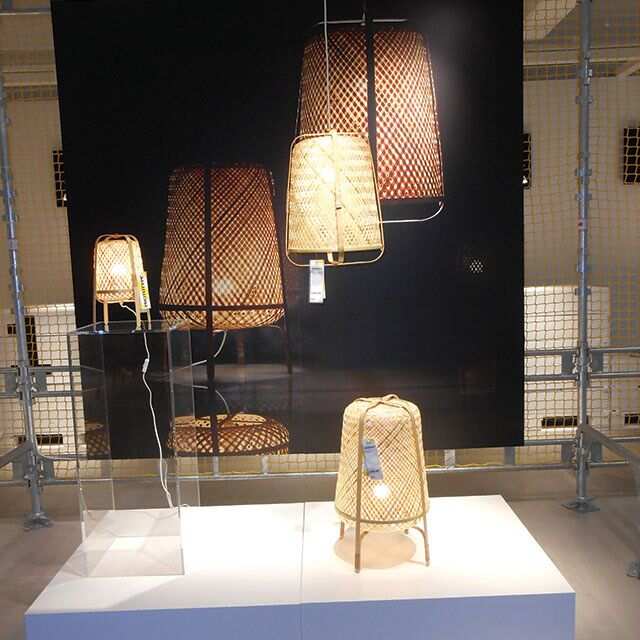
Handmade lamps: Sustainability as far as lighting is concerned also extends to the usage of sustainable lamps that use natural fibres like bamboo like IKEA’s handmade lamp family, KNIXHULT (to be launched in 2019), developed by product developer Anna Granath and her team. “You are much less likely to throw away your grandma’s old item. Instead, you take care of it and refurbish it to make it last longer. This is because you have an emotional bond to it. We have found that it’s easier to create that bond also with handmade items. You respect them more because somebody has taken time to make them, and not a machine. So, handmade is something that contributes to sustainability.” IKEA’S innovations as far as lighting is concerned include the TRÅDFRI smart lighting range that has motion sensors to ensure that lights are only on when they’re needed!

Windows: Other than artificial lighting, thoughtful placement of windows in a home also ups the sustainability of a home’s interior design. For example, adequate natural lighting in the form of bay windows or skylights effectively does away with the need of artificial lights during the day.
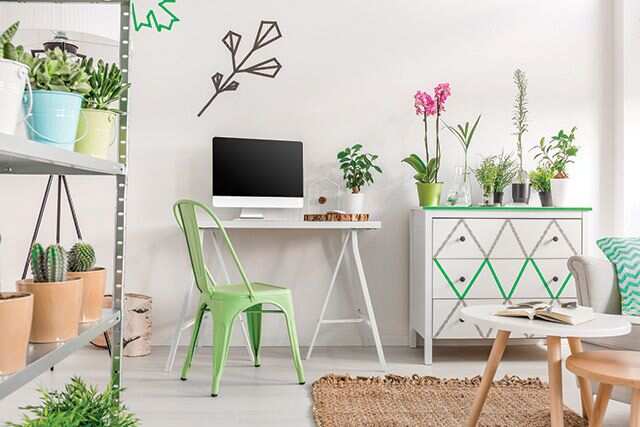
Local resources: Always try to use locally sourced materials for your décor elements to cut down the carbon cost of transportation and help the local economy as well. For instance, choose tiles for your kitchen from those made by your local artisans or use dhurries and window dressings made by weavers in your area.
Sustainable furnishings and furniture: According to the report, Environmental Sustainable Interior Design: A Snapshot Of Current Supply Of And Demand For Green, Sustainable Or Fair Trade Products For Interior Design Practice, home furnishings can only be classified as sustainable when they are: free from harmful chemicals that can leach into the water supply, pollute the air, and be absorbed by human skin; from a renewable source; and if synthetic, 100% recyclable; durable and biodegradable. Some sustainable plant fibres that you can use in your home include Organic cotton; Organic linen; Bamboo; Nettle; Hemp; Soy fibre. Sustainable animal fibres are: Wool; Cashmere; Alpaca; Camel hair; Leather; and Silk. Synthetic fibres can be considered sustainable when they are made from recycled materials like plastic bottles and waste from industrial production.
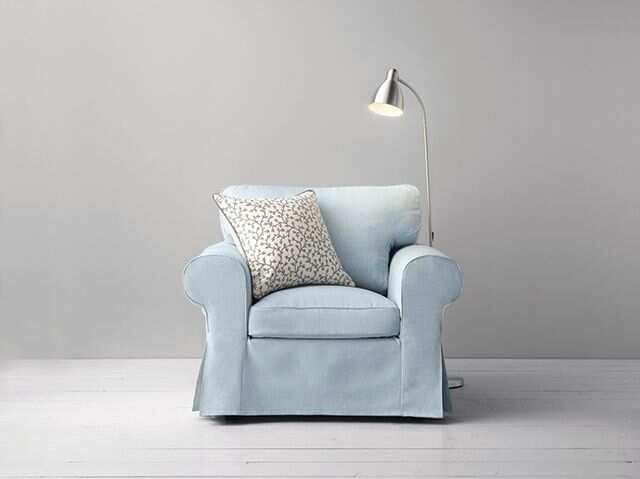
Furniture: Always choose furniture that is durable so that you don’t have to keep changing it every few years. “Explore furniture in innovative materials and smart textiles. At IKEA we have a whole innovation department that is working towards creating materials that are durable, strong and leave a minimum impact on the planet,” says Lundstrom. For instance, “the IKEA EKTORP sofas are tough, with strong seams, reversible cushions and washable covers. This is a sofa series that can take the rigours of throwing yourself onto it and squishing into the cushions day after day, year after year.” All the cotton used in the covers comes from more sustainable sources. “If it is wooden furniture you are looking at, make sure that the wood has been sourced from areas with where reforestation is guaranteed,” says Kohli.

Save water: The planet is running out usable water and that is a reality that we can’t run away from any longer. And the reality is not even as far as Cape Town, South Africa. According to recent reports, Indian cities like Delhi, Bengaluru and Chennai will all run out of ground water by 2020. Well, you can do your bit to reduce water wastage by being mindful. You can make a difference even by doing simple things like turning off the tap when you brush your teeth that saves 6 litres of water per minute) to taking an Indian style bucket bath instead of shower (wastes up to 45 litres a minute) to fixing a leaky tap (save 15 litres of water a day) to using a cistern displacement device in your toilet cistern like placing a plastic-wrapped brick in it, to reduce the amount of water released when you flush.
You could also invest water-saving devices like water aerators for taps that reduce water usage by 40 percent. For instance IKEA kitchen taps like ÄLMAREN, feature a pressure-compensating aerator. In fact, IKEA is partnering with Swedish company Altered to develop an affordable water saving nozzle that can be fitted to all common taps, enabling customers to reduce water use by over 90 percent. The MISTELN water nozzle should be available in August 2019 in all IKEA markets.
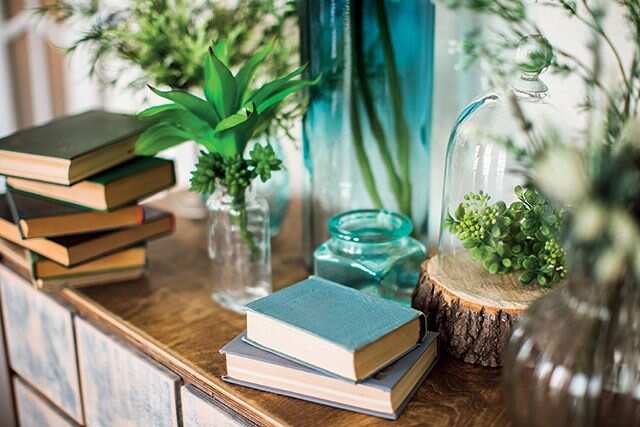
Reduce indoor pollution: Paints are a huge source of indoor pollution and often have very harmful chemicals in them called VOC (volatile organic compounds). These compounds that help the paint spread evenly, not just emit noxious gases soon after you paint your home but continue to do so for a number of years. Opt for zero or low VOC paints when you paint your home.
Avoid using air fresheners as they emit a high level of toxic gases like ethylene-based glycol ethers, which cause a number of medical disorders. Some also contain that phthalates that can cause endocrine disorders in children. Similarly many household cleaning products contain chemicals like alcohol, chlorine, ammonia or petroleum-based solvents that have deleterious effects on your health. Some like aerosol sprays, chlorine bleach, carpet cleaners, furniture and floor polish release harmful VOCs. Long term exposure to these can called serious health problems. One of the most dangerous carcinogenic contributors to indoor pollution is formaldehyde. This compound is used to make particle board, hardwood plywood panelling and medium-density fibreboard.

According to a report published in the International Journal of Sustainable Built Environment called Environmental Sustainable Interior Design: A Snapshot Of Current Supply Of And Demand For Green, Sustainable Or Fair Trade Products For Interior Design Practice, author C S Hayles says, “Society is beginning to recognise of the interconnectedness of buildings, people and community in the creation of an environmentally responsible built environment; clients are beginning to understand their role and impact on the environment. As a result they are seeking interiors that demonstrate environmentally responsible, sustainable design.”
And brands across the world are beginning to wise up to this demand. For instance, according to Ikea’s Sustainability Summary Report FY17, sales in their sustainable Life at Home range, grew to EUR 1,720 million in FY17. “There are over 500 products in the IKEA range that enable customers to save energy and water, cut waste, access cleaner air and generate renewable energy,” says the report.
An awareness of the importance of sustainable interior design is the first step towards doing your bit for the health and welfare of the planet and ensuring that your actions do not jeopardise future generations. Here’s how you can make a difference.

Reuse and repurpose
When you are doing up your home, the temptation is always to buy, buy, buy and throw away all the old stuff. However, the more you buy the more waste you generate. So when you replace that beloved sofa where you spent many a cosy night, or the rocking chair where you nursed your first child, remember that it’s all going to an already over-flowing landfill, where it’s going to sit for a few hundred years before it eventually bio-degrades. The better idea is to reuse and repurpose what you already have. All it takes is some creativity and imagination!
According to Mia Lundstrom, creative director, Life at Home, IKEA India, “the key is to reuse what you already have but to put it in a different context or be creative about it. It could be anything from lighting to framing pictures to posters. Reuse things around the house and make simple decorations out of them. You don’t need to have opulence and ornamentation everywhere in your décor,” says Lundstrom. “Always ask yourself before you throw away something if you can give it a second life. Circularity is not just about recycling—it’s also about expanding the life of a product. Rope in your friends and kids for a brainstorming session and you’ll be surprised at how many ideas you come up with to upcycle and recycle.”

Vintage buys: If you find that you absolutely need new furniture or artefacts for your home, explore thrift, vintage or second-hand stores instead. You will discover a wealth of stuff that you can give a new lease of life. Not only will it give character to your home, you can also experiment by juxtaposing vintage objects with futuristic ones. All you are limited by is your imagination.
Madhuri Sengupta, a Delhi-based journalist, always prefers going to antique markets or thrift stores for decor buys. "I love hunting around in Delhi Amar Colony furniture market in South Delhi because there I often find the most exquisite antiques that have been discarded by their orginal owners. The last time I visited, I was lucky to find a beautiful teak rocking chair from the early 1900s. I also watch out for sales by diplomats who auction their furniture, digital gadgets and household wares when they leave the country. The homes of the Scandinavian diplomats always have a treasure trove of hardy furniture that is dying to find a fresh lease of life in another home!" she says. "When I am in a city like Kolkata, I make it a point to browse through the old antique stores and auction houses on Russell Street and Park Street that make me feel like Alice in Wonderland! From wooden furniture to porcelain and marble artefacts, to crockery and even doors and windows, you could up your entire house with finds from these places. "

Solar power: Indoor lighting is one of the most important things that you need to take into account when you design your sustainable, energy-efficient home. According to interior designer, Padma Shri awardee and President of the K2India design firm, Sunita Kohli, Sustainable design is also about using lighting that has the lowest consumption of energy like LED bulbs or eco-friendly solar energy that makes use of a resource that is so plentiful in India. “Solar energy might be slightly expensive in the short term, but in the long-term, it is cheaper to use particularly in a country like India that barring a few months of monsoon, has unlimited sunshine,” she says.
At the IKEA Democratic Design Days 2018 event in Almhult, Sweden, IKEA announced its collaboration with Little Sun, a company founded by artist Olafur Eliasson, that brings sustainable energy in the form of solar light to marginalised communities around the world. The collaboration will look at creating portable solar lighting and other off-grid solutions to meet the global need for energy.

LED bulbs: A simple way to cut down on your energy requirement, is to replace your incandescent bulbs and fluorescent tube lights with LED lights. Not only do they use up to 85% less energy than traditional incandescent bulbs, they also last for up to 20 years. IKEA switched their entire lighting range to LED lightbulbs in September 2015 and sold 85 million LED lightbulbs in 2017.

Handmade lamps: Sustainability as far as lighting is concerned also extends to the usage of sustainable lamps that use natural fibres like bamboo like IKEA’s handmade lamp family, KNIXHULT (to be launched in 2019), developed by product developer Anna Granath and her team. “You are much less likely to throw away your grandma’s old item. Instead, you take care of it and refurbish it to make it last longer. This is because you have an emotional bond to it. We have found that it’s easier to create that bond also with handmade items. You respect them more because somebody has taken time to make them, and not a machine. So, handmade is something that contributes to sustainability.” IKEA’S innovations as far as lighting is concerned include the TRÅDFRI smart lighting range that has motion sensors to ensure that lights are only on when they’re needed!

Windows: Other than artificial lighting, thoughtful placement of windows in a home also ups the sustainability of a home’s interior design. For example, adequate natural lighting in the form of bay windows or skylights effectively does away with the need of artificial lights during the day.

Local resources: Always try to use locally sourced materials for your décor elements to cut down the carbon cost of transportation and help the local economy as well. For instance, choose tiles for your kitchen from those made by your local artisans or use dhurries and window dressings made by weavers in your area.
Sustainable furnishings and furniture: According to the report, Environmental Sustainable Interior Design: A Snapshot Of Current Supply Of And Demand For Green, Sustainable Or Fair Trade Products For Interior Design Practice, home furnishings can only be classified as sustainable when they are: free from harmful chemicals that can leach into the water supply, pollute the air, and be absorbed by human skin; from a renewable source; and if synthetic, 100% recyclable; durable and biodegradable. Some sustainable plant fibres that you can use in your home include Organic cotton; Organic linen; Bamboo; Nettle; Hemp; Soy fibre. Sustainable animal fibres are: Wool; Cashmere; Alpaca; Camel hair; Leather; and Silk. Synthetic fibres can be considered sustainable when they are made from recycled materials like plastic bottles and waste from industrial production.

Furniture: Always choose furniture that is durable so that you don’t have to keep changing it every few years. “Explore furniture in innovative materials and smart textiles. At IKEA we have a whole innovation department that is working towards creating materials that are durable, strong and leave a minimum impact on the planet,” says Lundstrom. For instance, “the IKEA EKTORP sofas are tough, with strong seams, reversible cushions and washable covers. This is a sofa series that can take the rigours of throwing yourself onto it and squishing into the cushions day after day, year after year.” All the cotton used in the covers comes from more sustainable sources. “If it is wooden furniture you are looking at, make sure that the wood has been sourced from areas with where reforestation is guaranteed,” says Kohli.

Save water: The planet is running out usable water and that is a reality that we can’t run away from any longer. And the reality is not even as far as Cape Town, South Africa. According to recent reports, Indian cities like Delhi, Bengaluru and Chennai will all run out of ground water by 2020. Well, you can do your bit to reduce water wastage by being mindful. You can make a difference even by doing simple things like turning off the tap when you brush your teeth that saves 6 litres of water per minute) to taking an Indian style bucket bath instead of shower (wastes up to 45 litres a minute) to fixing a leaky tap (save 15 litres of water a day) to using a cistern displacement device in your toilet cistern like placing a plastic-wrapped brick in it, to reduce the amount of water released when you flush.
You could also invest water-saving devices like water aerators for taps that reduce water usage by 40 percent. For instance IKEA kitchen taps like ÄLMAREN, feature a pressure-compensating aerator. In fact, IKEA is partnering with Swedish company Altered to develop an affordable water saving nozzle that can be fitted to all common taps, enabling customers to reduce water use by over 90 percent. The MISTELN water nozzle should be available in August 2019 in all IKEA markets.

Reduce indoor pollution: Paints are a huge source of indoor pollution and often have very harmful chemicals in them called VOC (volatile organic compounds). These compounds that help the paint spread evenly, not just emit noxious gases soon after you paint your home but continue to do so for a number of years. Opt for zero or low VOC paints when you paint your home.
Avoid using air fresheners as they emit a high level of toxic gases like ethylene-based glycol ethers, which cause a number of medical disorders. Some also contain that phthalates that can cause endocrine disorders in children. Similarly many household cleaning products contain chemicals like alcohol, chlorine, ammonia or petroleum-based solvents that have deleterious effects on your health. Some like aerosol sprays, chlorine bleach, carpet cleaners, furniture and floor polish release harmful VOCs. Long term exposure to these can called serious health problems. One of the most dangerous carcinogenic contributors to indoor pollution is formaldehyde. This compound is used to make particle board, hardwood plywood panelling and medium-density fibreboard.

EmoticonEmoticon